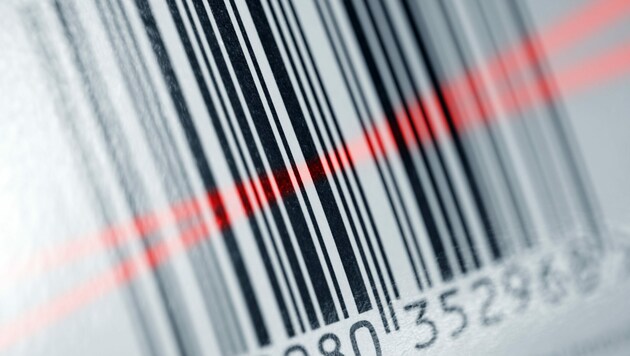50 years of the barcode
How a few bars have changed our world
The barcode is 50 years old. On June 26, 1974, a product marked with a barcode was recorded and sold for the first time at a checkout in a supermarket in the USA. Today, codes are everywhere - even though new technologies have long been available.
"There is currently no end date for the use of barcodes," said GS1 Switzerland, the organization that generates and issues barcodes.
However, barcodes will only be mandatory for another three years. By the end of 2027, retailers should also be able to process so-called 2D codes, which include QR codes, in addition to barcodes. These can hold significantly more information: while the barcodes on packaging encode a 13-digit number, QR codes can display around 4,000 letters or over 7,000 numbers.
The barcode will not disappear
But even if packaging with such 2D codes no longer has to be provided with an additional barcode after 2027, the barcode will not disappear, a spokeswoman for the barcode organization was convinced.
One reason for this may be that barcodes are ubiquitous. They are on products in stores, on shipping labels on parcels, on patient wristbands in hospitals and on blood samples in laboratories. A few years ago, the BBC described barcodes as "one of the 50 most important things that have changed our global economy."
The codes have come a long way since a Wrigley's chewing gum was first scanned at a checkout in the US state of Ohio in 1974. The time-consuming process of typing in the price was replaced by a simple scan. Queues in supermarkets became shorter and stock management simpler and more accurate.
Ten years later, in 1984, the first scanner checkouts were also used in Switzerland, according to GS1. Today, the codes are scanned over ten billion times a day, according to GS1. This corresponds to around 116,000 scans per second.
Invention long before market launch
The invention of the barcode goes back much further than its market launch. The patent for the barcode was issued to the two Americans Norman Joseph Woodland and Bernard Silver in 1952. As students, they had overheard a supermarket manager's wish to automatically record which goods were being sold at the checkout. The light transmitter, which can distinguish between the light and dark stripes and measure the length of the bars, did not yet exist at the time.
The principle behind the barcodes is simple: thick and thin bars stand for different numbers, just as short and long tones in Morse code stand for different letters. If you read the bars with a special scanner, you get a number. The barcodes consist of a country code, a company name and an article number. The last digit in the code is a check number. The scanner transmits this character string to an IT system, which can interpret and provide the encrypted information.
Woodland and Silver sold the patent for the codes to an electronics company in 1962 for just 15,000 US dollars (14,000 euros in today's money). Silver did not live to see the triumph of the barcode. He died in a traffic accident in 1963. As an employee of IBM, Woodland was involved in the further development of the automatic identification system for goods. He died in 2012 at the age of 91.
This article has been automatically translated,
read the original article here.




Kommentare
Liebe Leserin, lieber Leser,
die Kommentarfunktion steht Ihnen ab 6 Uhr wieder wie gewohnt zur Verfügung.
Mit freundlichen Grüßen
das krone.at-Team
User-Beiträge geben nicht notwendigerweise die Meinung des Betreibers/der Redaktion bzw. von Krone Multimedia (KMM) wieder. In diesem Sinne distanziert sich die Redaktion/der Betreiber von den Inhalten in diesem Diskussionsforum. KMM behält sich insbesondere vor, gegen geltendes Recht verstoßende, den guten Sitten oder der Netiquette widersprechende bzw. dem Ansehen von KMM zuwiderlaufende Beiträge zu löschen, diesbezüglichen Schadenersatz gegenüber dem betreffenden User geltend zu machen, die Nutzer-Daten zu Zwecken der Rechtsverfolgung zu verwenden und strafrechtlich relevante Beiträge zur Anzeige zu bringen (siehe auch AGB). Hier können Sie das Community-Team via unserer Melde- und Abhilfestelle kontaktieren.